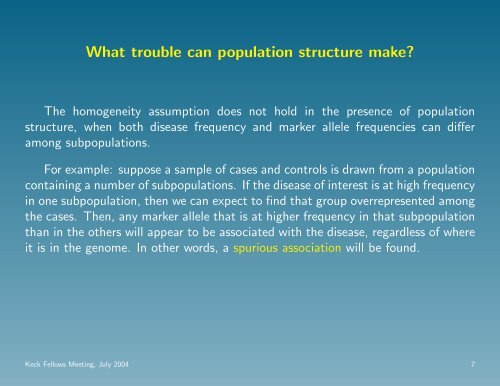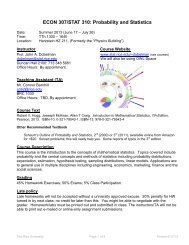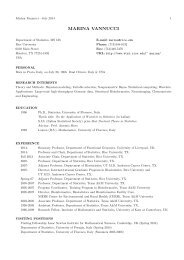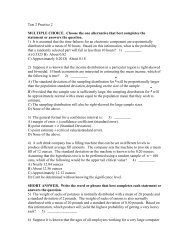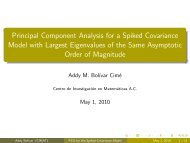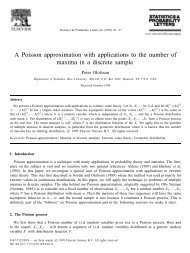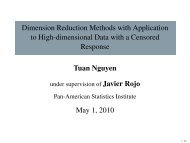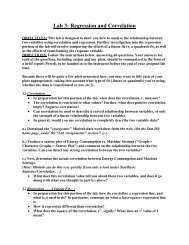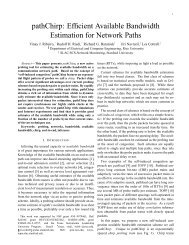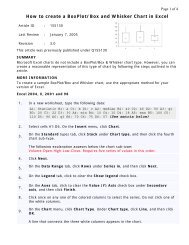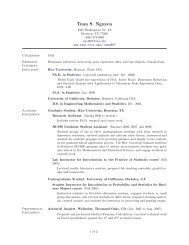slides in pdf format - Department of Statistics - Rice University
slides in pdf format - Department of Statistics - Rice University
slides in pdf format - Department of Statistics - Rice University
Create successful ePaper yourself
Turn your PDF publications into a flip-book with our unique Google optimized e-Paper software.
What trouble can population structure make<br />
The homogeneity assumption does not hold <strong>in</strong> the presence <strong>of</strong> population<br />
structure, when both disease frequency and marker allele frequencies can differ<br />
among subpopulations.<br />
For example: suppose a sample <strong>of</strong> cases and controls is drawn from a population<br />
conta<strong>in</strong><strong>in</strong>g a number <strong>of</strong> subpopulations. If the disease <strong>of</strong> <strong>in</strong>terest is at high frequency<br />
<strong>in</strong> one subpopulation, then we can expect to f<strong>in</strong>d that group overrepresented among<br />
the cases. Then, any marker allele that is at higher frequency <strong>in</strong> that subpopulation<br />
than <strong>in</strong> the others will appear to be associated with the disease, regardless <strong>of</strong> where<br />
it is <strong>in</strong> the genome. In other words, a spurious association will be found.<br />
Keck Fellows Meet<strong>in</strong>g, July 2004 7


